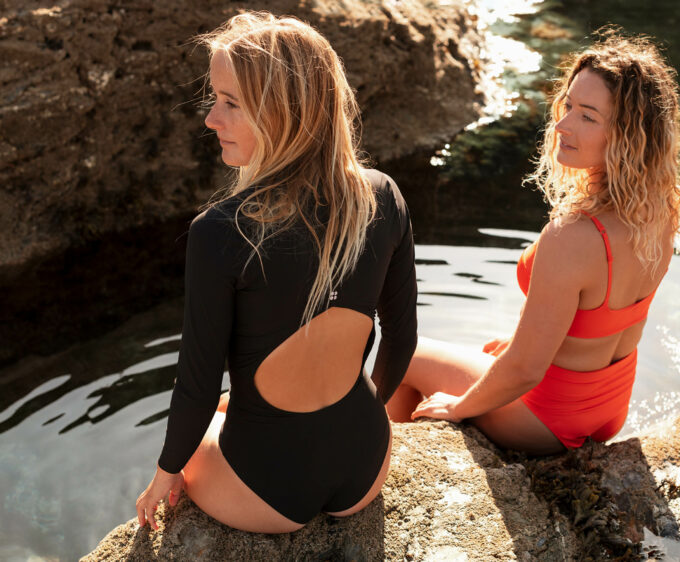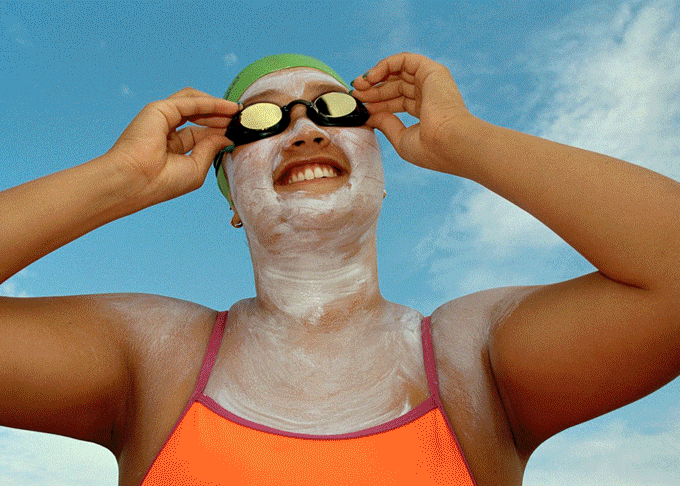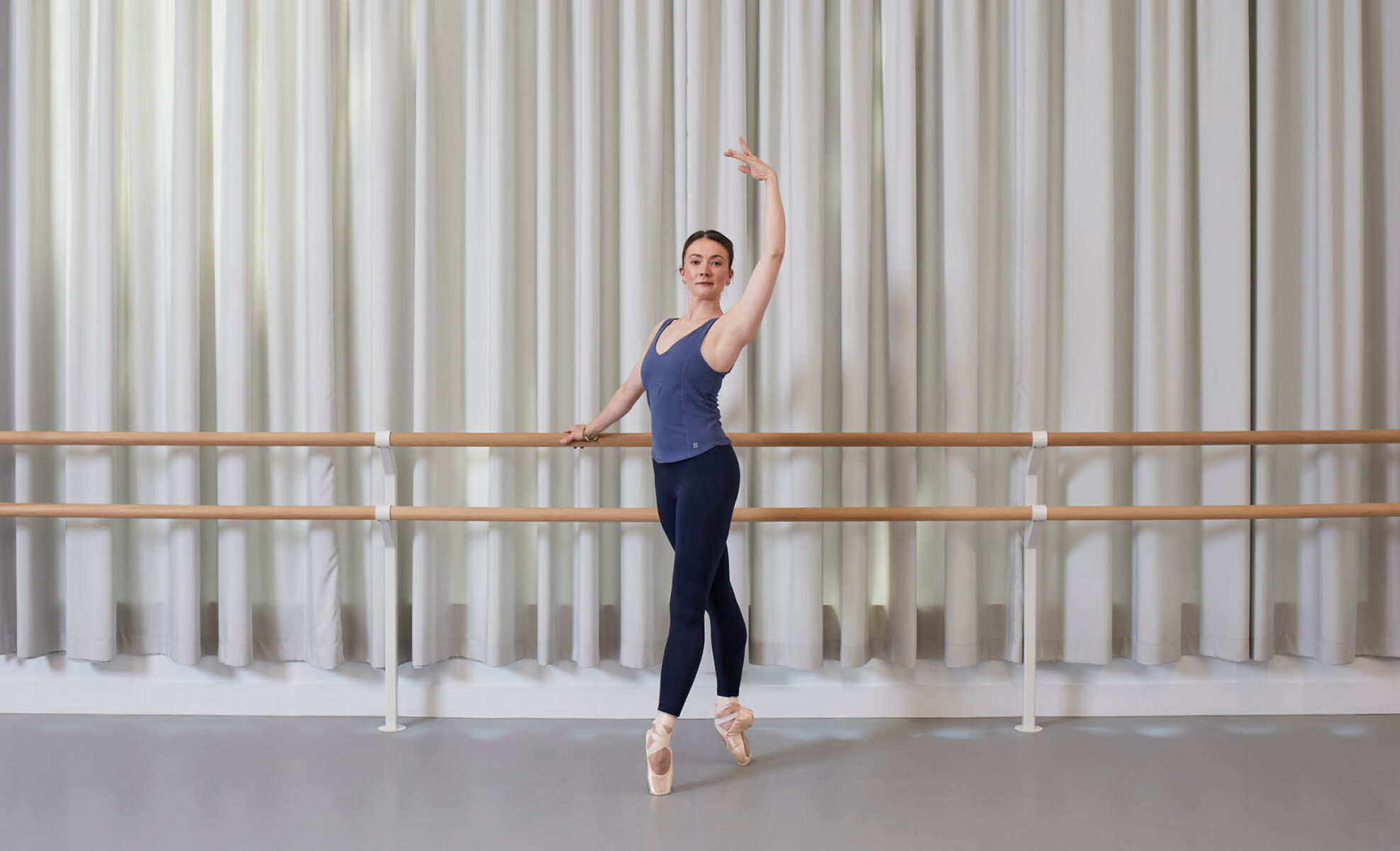
Beyond The Barre
From the spotlight of the stage to the quiet moments of motherhood, Claire Calvert dances through life with grace and determination. Discover how she expertly balances the demands of a top ballet career with the joys and challenges of raising a family.
By Ellë Bolland
Photography by Heiko Prigge
We meet early on a Saturday morning at the Royal Academy of Dance. The crew, laden with bags of clothing, is excited to photograph ballet dancer Claire Calvert. Sweaty Betty is launching a new Studio collection and reached out to us (Glorious) to capture it, asking if we had anyone in mind who would be a great fit. It felt like fate – we’ve been wanting to interview and photograph Claire Calvert for a while, and this collection seemed like the perfect match. The answer was unanimous, so I quickly texted Claire to make it happen.
Claire exudes a quiet strength, a warm smile, and a down-to-earth charm. She is measured, funny, unpretentious, and charismatic. Beneath her unassuming exterior lies a world-class talent. It’s a rare combination – an athlete of exceptional skill who is also incredibly approachable and easy to work with.
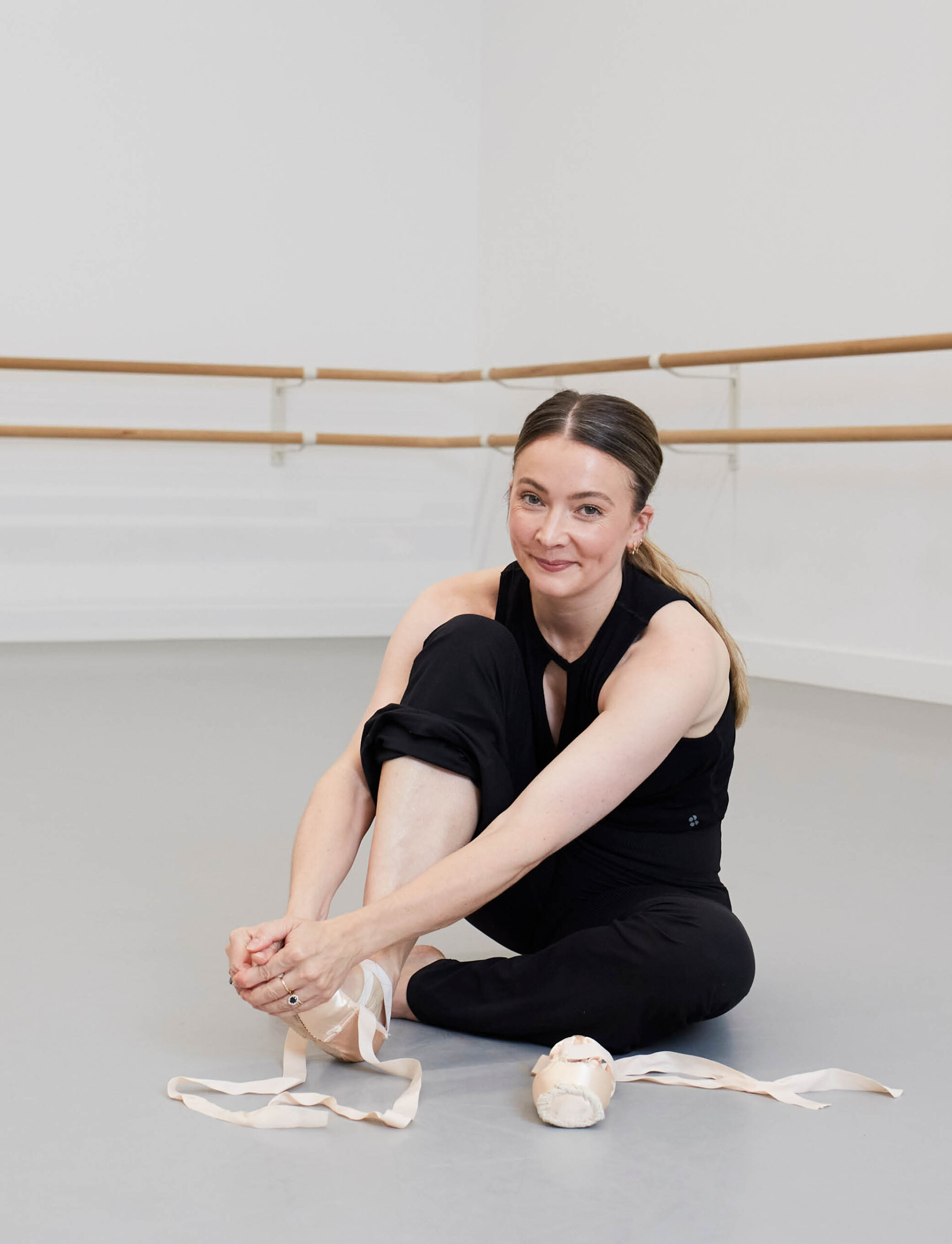
As we begin to open the boxes of clothing in The Linbury Studio at the Royal Academy of Dance, the massive, beautiful room is filled with oohs and ahhs as we pull out power mesh leggings, cosy knits, and what can only be described as the softest sand-washed set I’ve ever touched. Claire is stretching, the crew is drinking coffee, I’m opening packets of socks; there’s a buzz of excitement and a hum of chatter, and then silence. Pin-drop silence. Claire effortlessly lifts her leg above her head, holding the pose with a grace that defies belief. Then, as if it were the most natural thing in the world, she lowers her leg and glides en pointe across the room. The shoot has begun, and honestly, I don’t know what we were expecting, but seeing this woman command a room as she gracefully moves across it is nothing short of breathtaking.
Ballet is a discipline of contrasting dialects: delicate artistry married with raw athleticism, stories of damsels in distress clashing with the physical prowess of their performers. For nearly 200 years, it was thought that women weren’t strong enough to take principal roles on stage. But ballet has evolved. Today’s female dancers leap higher, spin more, and hold themselves with brute strength more than ever before, breaking boundaries once thought to be reserved for men. Beyond pushing physical limits, even schools with the most illustrious heritage are no longer wedded to old-fashioned semantics.
“One of the amazing things about ballet is there are rules to things that have stood the test of time, but there have definitely been changes in the way it’s taught recently. There’s a lot more consideration for students and their emotional wellbeing now. A lot of it is down to the language being used – there’s a bigger movement on how we speak about people’s bodies, for example. I think people are trying to have healthier boundaries to make students feel comfortable,” Claire tells me.
This shift in ballet’s teaching philosophy mirrors Claire’s own journey. Despite spending a lifetime in environments where perfection is paramount, she remains grounded and relatable. Many might assume a certain stereotype for ballerinas: delicate, theatrical, and accustomed to the spotlight – but Claire defies this at every turn. From meeting her husband at work to documenting her home renovations on Instagram, she’s a modern woman doing it all from scratch, just like the rest of us. As a mother to her 11-month-old daughter Isla, Claire is determined to maintain her identity, skilfully navigating the demanding roles of both a full-time performer and a devoted mum.

Listening to Claire speak about her career, she’s a professional athlete in every sense of the word. From the age of eleven, she was sent to boarding school with 125 other budding ballerinas at the White Lodge, a former royal hunting lodge in Richmond Park. By the time she was attending the Upper School (16-18 years old), she was renting a flat whilst juggling her A-Levels in London’s Leicester Square, just a stone’s throw away from the Royal Opera House where they would perform. In her graduation year she danced lead roles in Raymonda Act III and Jabula, then stepped up to a Principal role as the Lilac Fairy (Sleeping Beauty) in 2009, despite the fact she was still only an Artist. In a matter of years, Claire became a Soloist (2012), and a First Soloist in 2016, building a repertoire of leading roles in performances we’d know and recognise, from the Sugar Plum Fairy in The Nutcracker, to Odette/Odile in Swan Lake, which Claire describes as the “ultimate role for a ballerina”. Countless lead roles later, she still trains for seven hours a day, six days a week, but this time, whilst juggling an 11 month old.
So how does Claire manage it all? While many new mothers might take leisurely walks in the park during the first six months postpartum, Claire was back in the studio just four months after giving birth. “I needed to start getting back into training because you already have such a long period where you can’t do anything before you even give birth,” she explains. “Maintaining the same level of fitness isn’t your priority when you’re pregnant!”. Initially, Claire’s return to training was slow due to minimal support for Isla. With her husband, Alexander Campbell, former Principal dancer at The Royal Ballet and now Artistic Director at the Royal Academy of Dance, still dancing, Claire had to navigate a tricky routine. “I’d bring Isla to the studio, where she’d stay with Alexander and the other principals while I exercised for an hour before heading home,” she recalls with a laugh. “Now, with a nanny helping out, it’s a bit easier as my days get longer ahead of the season’s start at the end of September”.
With childcare now sorted and back in the rhythm of her work, Claire’s daily schedule is demanding. “Class starts at 10:30, warming up and practising until 11:45. Then from midday until 6:30 pm we rehearse. On show days, we rehearse until 5:30, then perform from 7:30 to 10:30 pm. We do that six days a week, with Sundays off”.
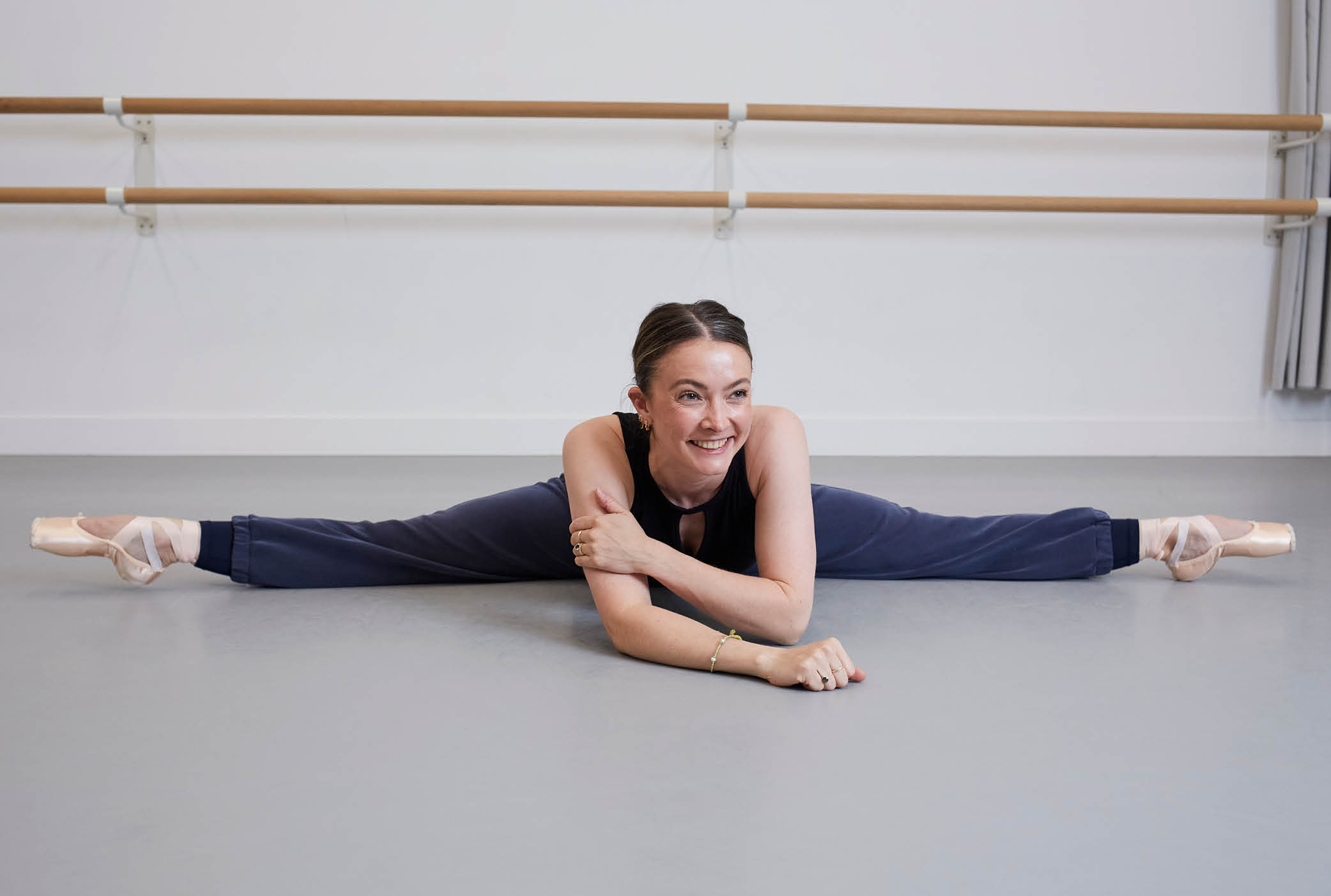
Performance
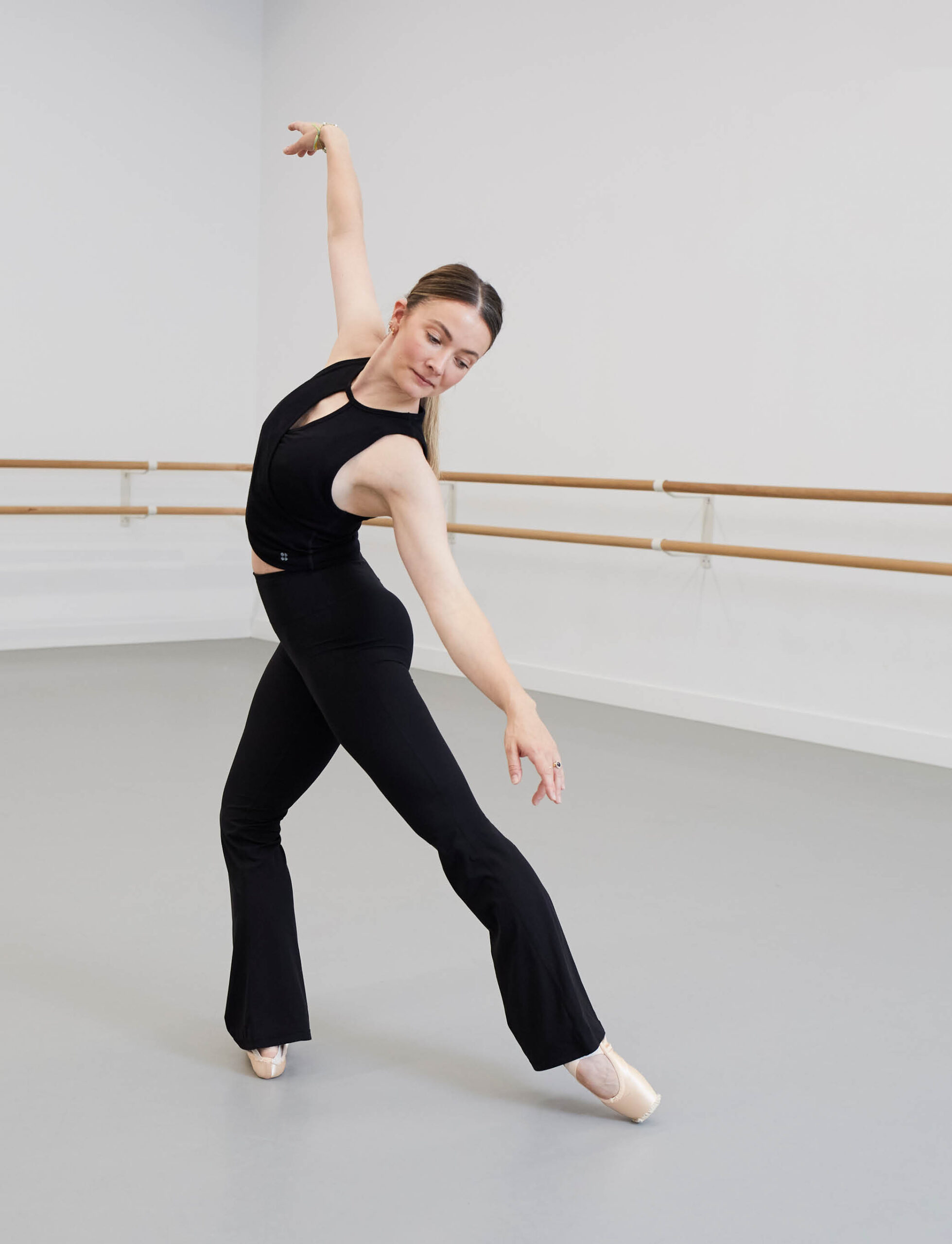
This rigorous schedule mirrors the physical demands of ballet. Like any professional sport, ballet is known to be immensely demanding on the body, with the average ballerina having 10-15 years on the job. It’s no wonder many dancers retire between the ages of 30 and 40, and Claire is mindful of this… “Part of my decision to try for a baby was because I was aware of my age and thinking about the future,” she explains. “It’s strange because all of a sudden your thoughts reverse from everything you’ve thought for your whole life!”. She hopes to continue dancing for a few more years and reassess her career when Isla starts school. “It also depends on how my body copes with juggling parent life alongside a physically demanding career!” she adds. “I think sometimes you just need to see where things take you. It’s about taking what serves you now rather than planning too far ahead”. This is definitely a lesson we can all learn from and apply to our own lives!
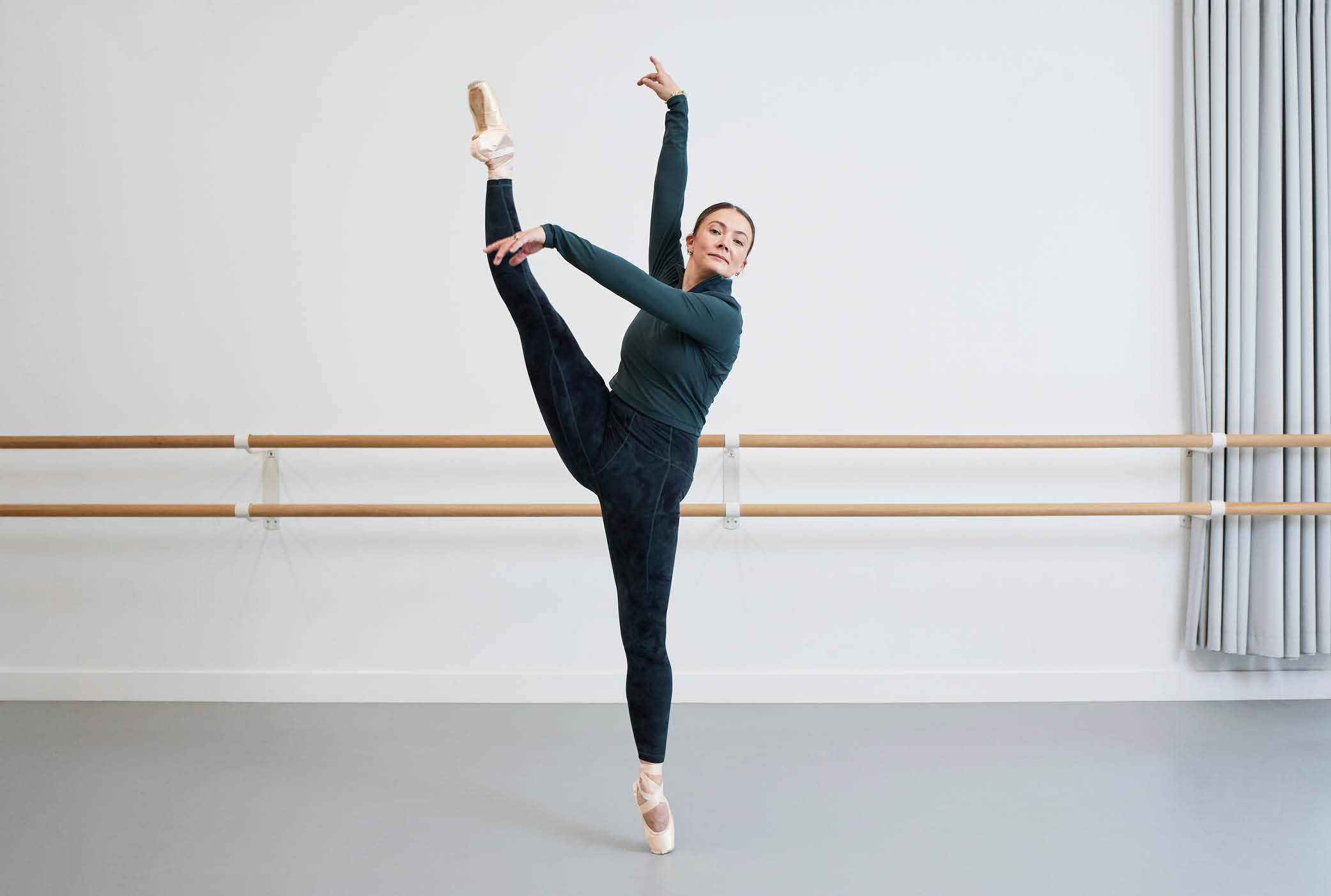

Balancing a professional career in ballet with having a personal life is a challenge. “I always phrase it that ballet is a lifestyle and it’s not just a job. If I had a performance or a long day of rehearsals, the reality is that I wouldn’t be going to a party”. Claire tells me she’s missed weddings and other events due to shows, but acknowledges she’ll make exceptions for significant occasions. “There are obviously certain times where I’ve asked for one performance off, like for my sister’s wedding!”.
The sacrifices Claire has made in her personal life demonstrate the sheer discipline ballet demands. “Routine starts from a very young age, so it becomes very normal!” she laughs. And what about the sacrifices those around you have to take? Like in most elite sports, if you’re piqued as a sporting prodigy from an early age, your parents eventually arrive at a crossroads. Do they invest; physically, emotionally, and financially, to allow you to pursue your dreams of a professional sports career? Is it even viable? What are some of the sacrifices they need to take to get you there?
“I think in any elite sport, parents and children inevitably have to make certain sacrifices,” Claire says. “There’s uniforms to buy, new shoes when your feet grow, events and shows to attend… When you’re the child, you’re not privy to the costs, whether physically, emotionally, or financially, nor do you have the ability to understand what’s even needed to get you to where you want to be”. Claire smiles, “As a family deciding your 11-year-old daughter is going to go to boarding school to train for ballet, it’s a difficult decision! It’s obviously a narrow track to go down from a very young age, so after honest conversations, you obviously want to support that”.
Reflecting on her experience, Claire enjoyed her time boarding at the Royal Ballet School, where she made some of her still closest friends. “I didn’t feel like a sacrifice for me, because I didn’t know any different to be honest,” she says. Now an adult and mother to her own child, her perspective has shifted. “I have a goddaughter turning 11 soon, and I can’t imagine her living away from home; she’s still a baby!”. When the scales had changed for us all during that infamous first lockdown, Claire moved in with her parents for the first time in years. “We actually chatted about a lot of things we’ve never spoken about, for example how they made the decision to send me to boarding school,” she shares. “My parents asked for a bit of extra time because they wanted to consider things like how things would be for my sister, how that would set her life up, and whether she might expect to go to boarding school too. How were they making Claire different from Jennifer? My mum in particular wanted to make things feel very fair between the two of us. That was probably the biggest consideration for them”.
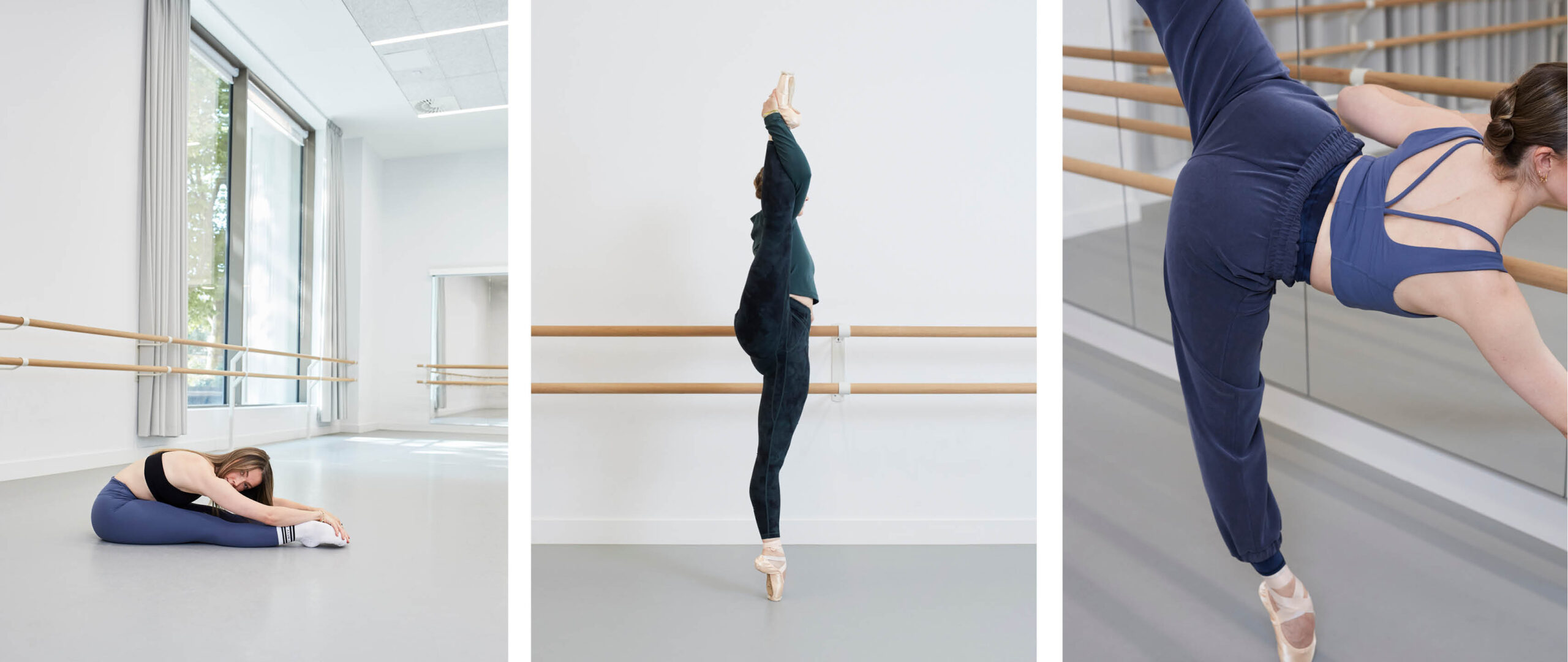
motherhood
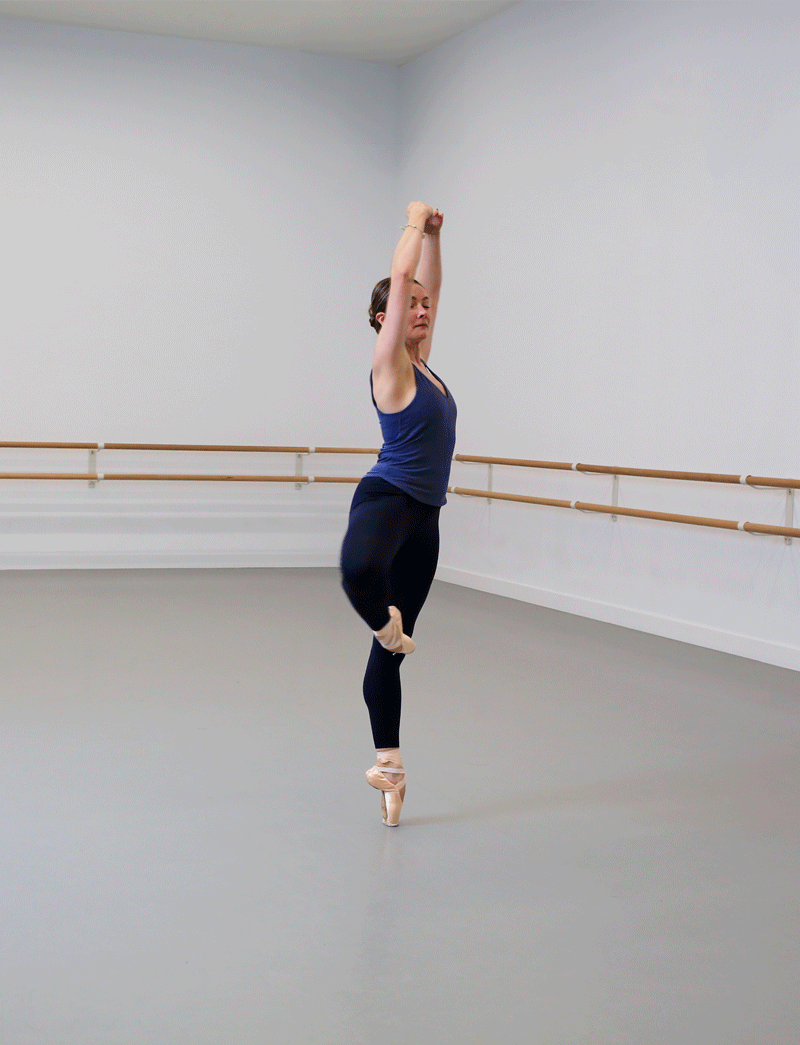
Claire reflects on her daughter Isla’s future with a blend of curiosity and practicality. With both her and her husband being prominent figures in the ballet world, it’s only natural to wonder if Isla might follow in their footsteps. Claire acknowledges the role of both nature and nurture in this decision. “One thing I would say is she already has very good posture! Everyone comments on it!”. Still, she remains grounded, noting that many children of dancers don’t necessarily pursue ballet themselves. “There are lots of dancers who’ve had kids who haven’t gone on to be ballet dancers. She’s still very little, so we’ll see!”. She laughs as she adds, “There’s no doubt that Isla will hear about ballet and see pictures and videos of us dancing, whereas some kids might not even know what ballet is. But of course, we won’t be forcing Isla into ballet. It’s too tough a job to pursue unless you genuinely want to do it!”.
Claire also highlights the broader benefits of ballet for young children, beyond just dance. “Ballet is a great sport for children to get into; it helps develop strength, coordination, and people skills – for example, learning to wait for others to finish their steps before taking your own. I guess it’s something you can also learn from sports like gymnastics, football, or rugby,” she explains.
Her commitment to these benefits is evident in her and Alexander’s new venture; a children’s ballet school in South West London. “We have a wonderful teacher supporting us to teach baby ballet from the age of three upwards,” Claire shares. “Experiencing it as an adult has been fascinating – it’s amazing to see how many little children naturally move well, floating around and wafting their arms when you play some music”.
From an outsider’s perspective, Claire is a powerhouse. She seamlessly balances her career, motherhood, and a new business venture, appearing to juggle it all effortlessly. When I ask her if she feels powerful, she reflects, “For me, feeling powerful means absorbing all the information I can from others to understand things better,” an interesting angle we don’t often hear when speaking with strong women such as herself. She elaborates, “In ballet, that means doing all the extra exercises, cardio, routines, and lifestyle adjustments to perform at my best. Feeling fit is crucial to my sense of strength and identity. Without it, I don’t feel powerful! It’s why I was so eager to get back to exercising. It’s part of who I am, whether I’m a mother or not. Even if I stop dancing, it will remain important to me”.
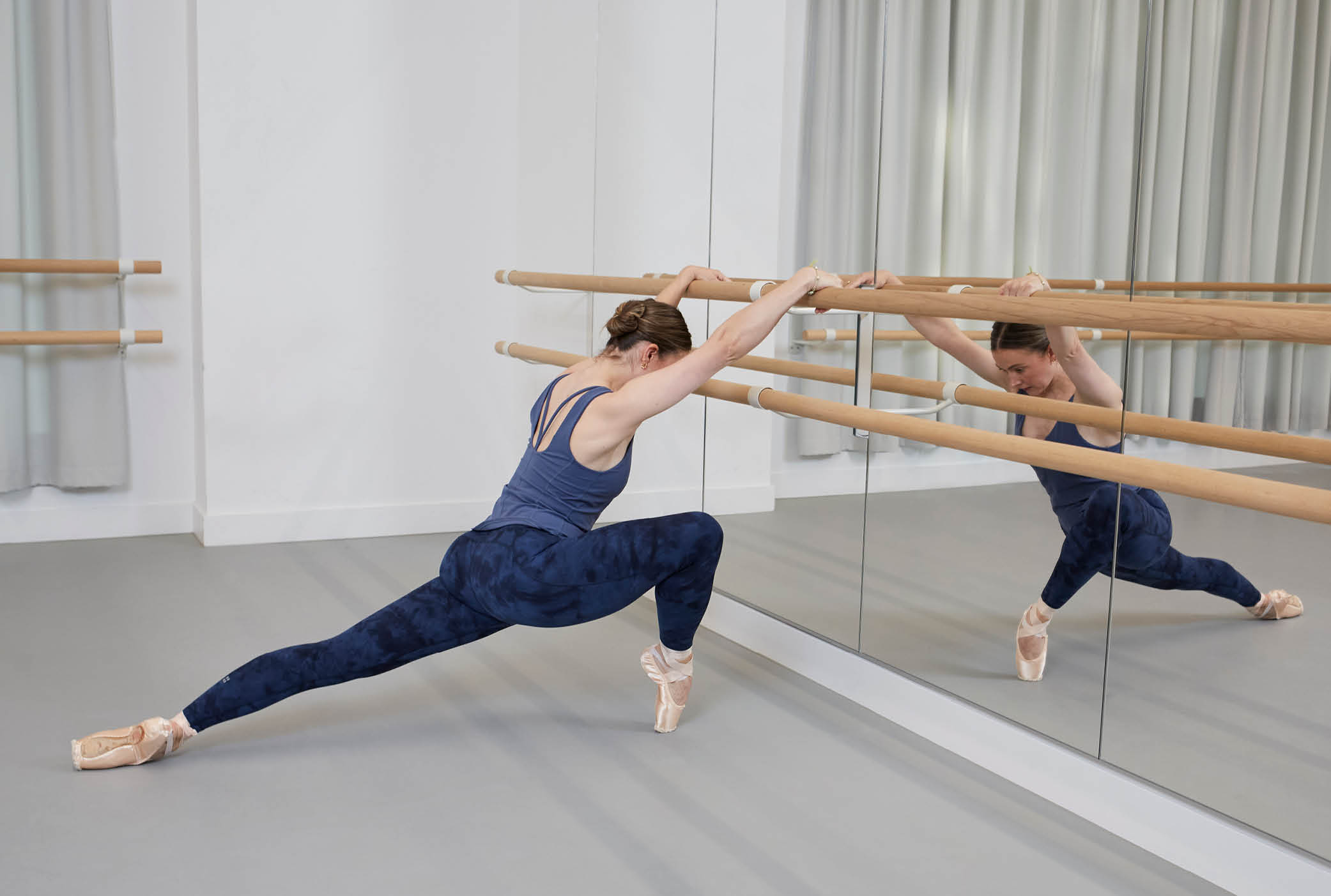
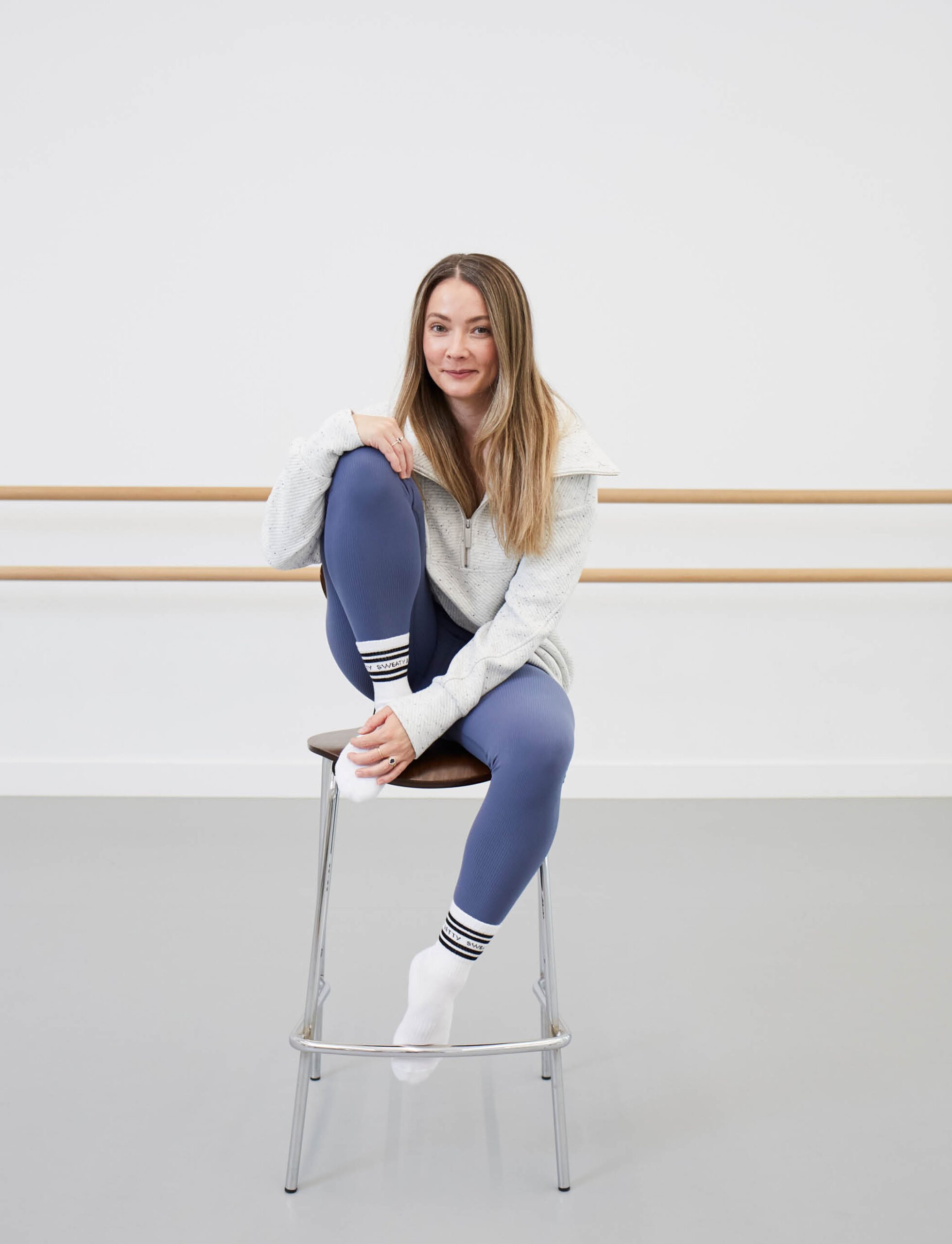
Claire acknowledges the challenges that come with juggling it all and maintaining her sense of self, saying, “I feel very strongly that I can only be the best mother to Isla if I’m okay myself. You don’t suddenly become a different person once you’ve had a child. To be the best mum I can be, I need to keep a part of myself intact”.
On the subject of her career, Claire remains open-minded about the future. “I’m considering that I might need to make a decision to stop dancing eventually, but for now, I’m trying to maintain both,” she notes. “You need to experience these things to know if they’re right for you. I haven’t been back on stage yet, and there may be nights when I can’t put Isla to bed or see her in the morning – I don’t know how I’ll feel about that yet”. She continues, “Ballet is my job, and realistically, there’s an age limit. If I stop now, I can’t return in five years. I’m not making any decisions until I’ve given it a fair try and see how I feel about balancing everything. I feel fortunate to be in a time where it’s acceptable to work and do both, supported by a very understanding family and husband. It’s about being open to allowing these things to happen”.
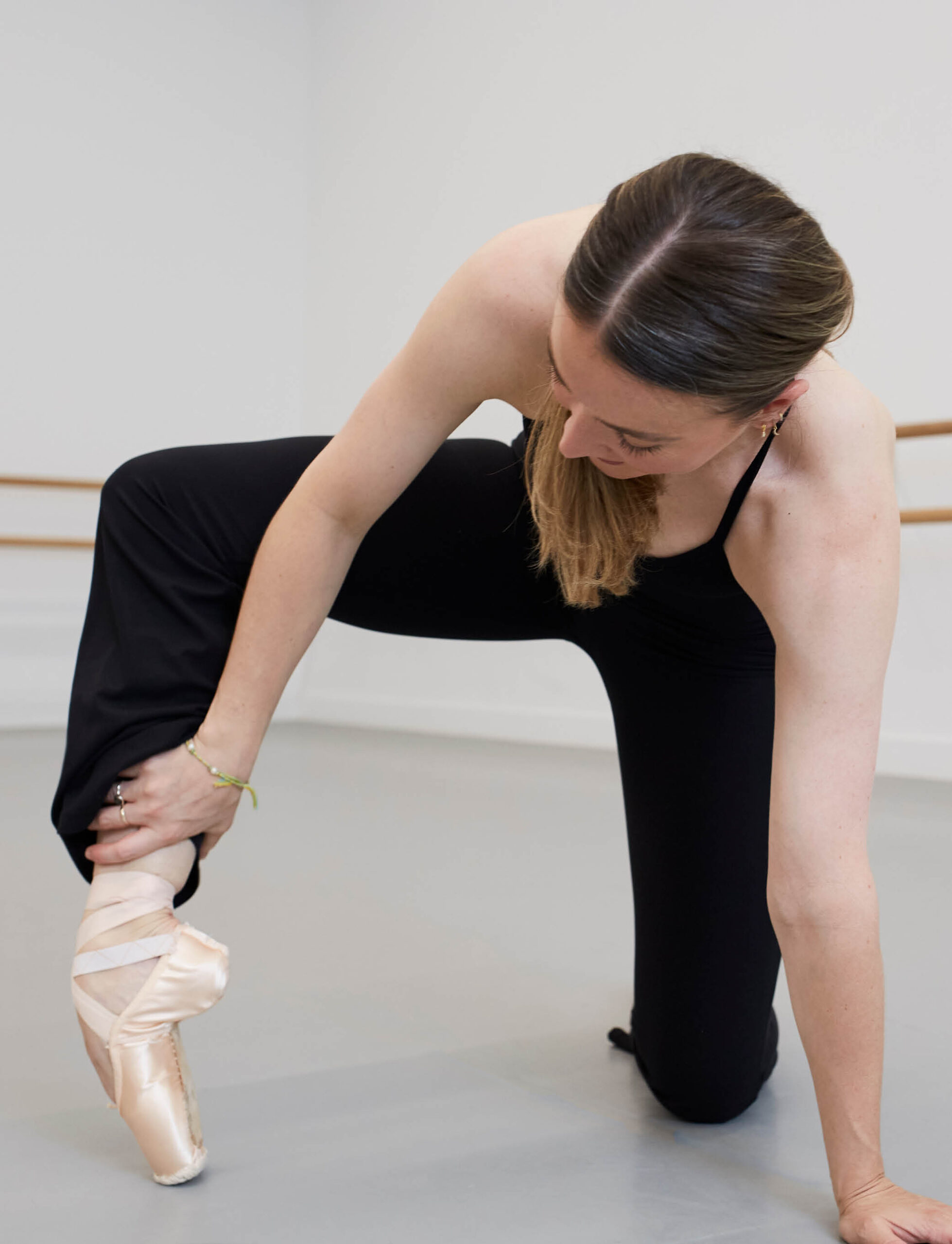
For me, the biggest takeaway from speaking to Claire is her mindset – she’s practical yet so optimistic about her future on stage. She disrupts the narrative which urges women to choose between their career and having kids as they get older. Even after a lifetime of sticking to the rigid routines of ballet, she’s open to trying new things and reinventing herself if necessary. Talking to her, you get the sense that ballet isn’t just a job for her – it teaches us that we can take on so many different roles at one time. Whether you’re a mum, a wife, a sister, a daughter, a friend, or a businesswoman, Claire proves that it’s possible to keep your identity and chase what makes you truly happy. She’s a reminder that we can all find our rhythm, no matter how many roles we take on.
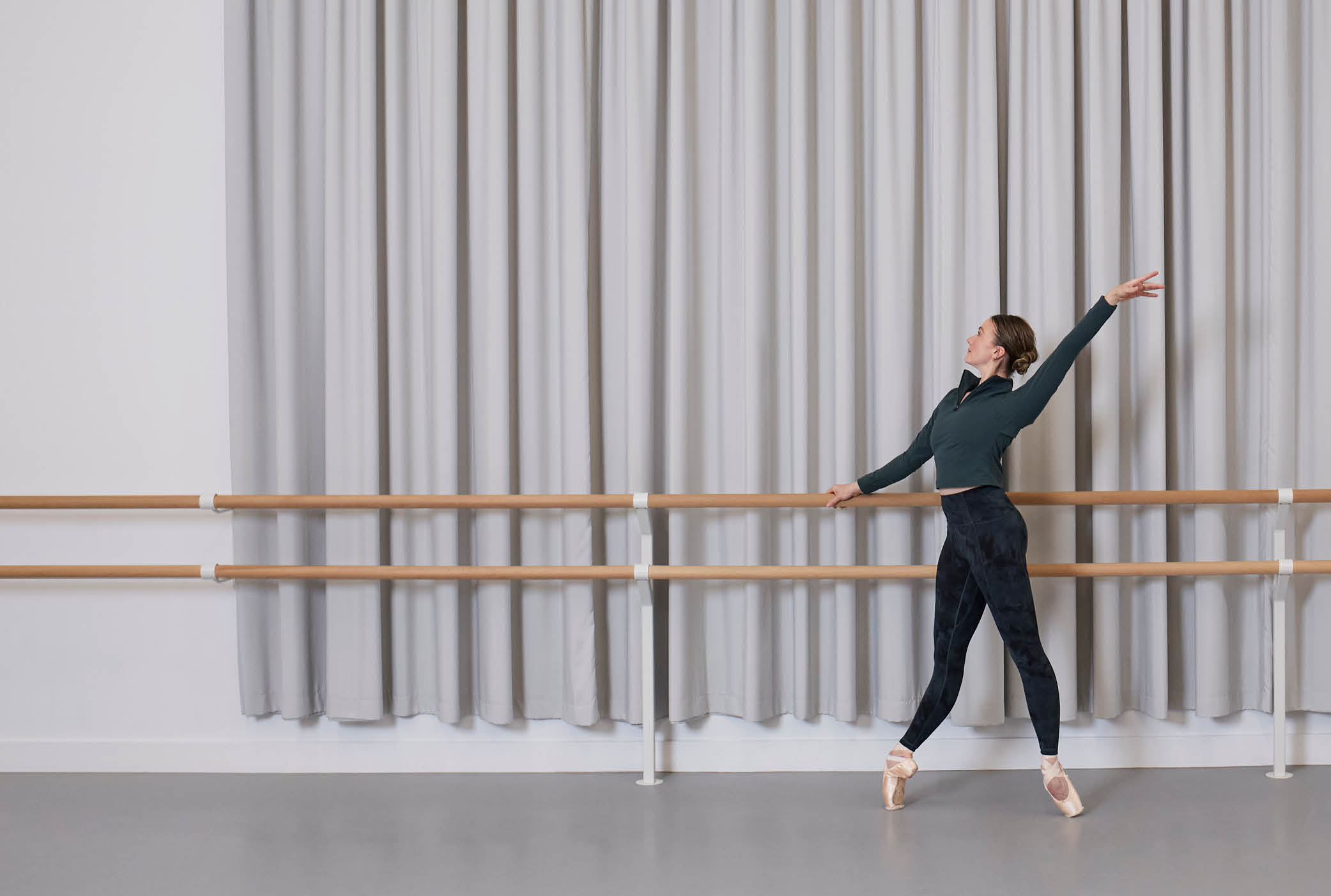
Keep up-to-date with Claire here
Discover the latest Studio collection from Sweaty Betty in store and online at Sweatybetty.com
Watch Claire perform the role of The Queen of Hearts in Royal Ballet production of Alice’s Adventures in Wonderland from 28th September 2024 until 16th July 2025. More information here
Huge thanks to Royal Academy of Dance for the spectacular location- The Linbury Studio. More information here
Photographed by Heiko Prigge, assisted by Karina Barberis
Art Direction by This Is Root
Produced by Glorious Sport

